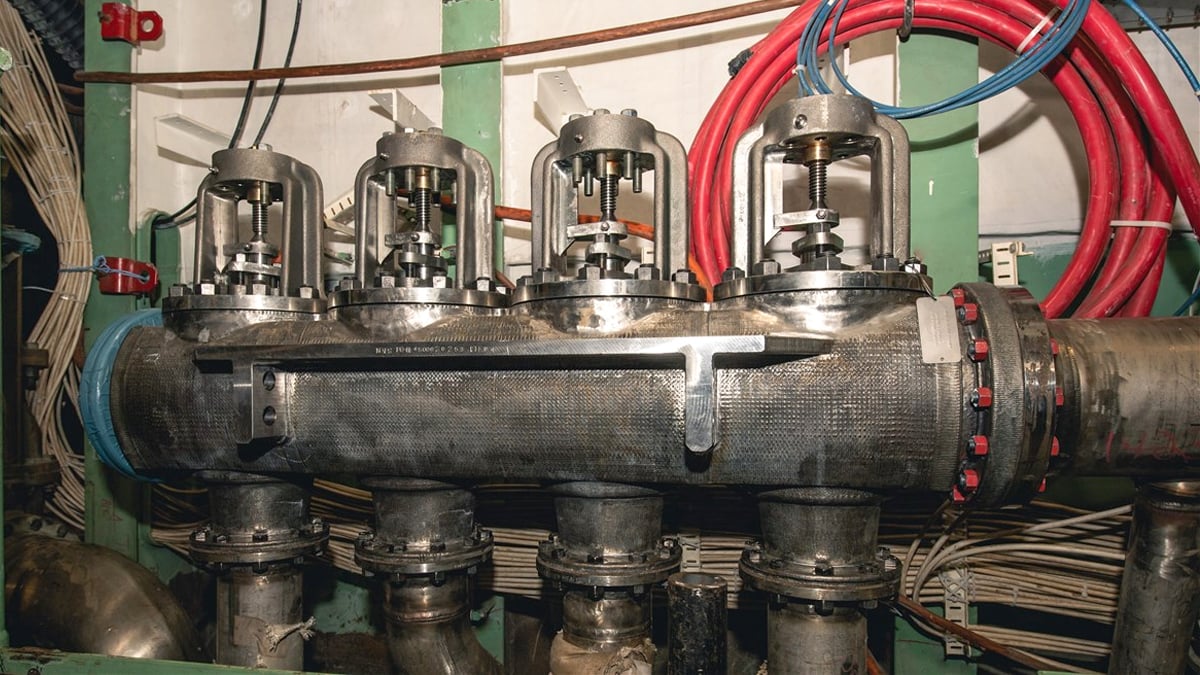America’s largest shipbuilder for the defense sector, HII, just installed the first metal 3D printed valve manifold assembly on a new nuclear-powered aircraft carrier bound for the U.S. Navy. The company has plans to install more than 200 additional 3D printed parts this year.
HII turned to additive manufacturing years ago to find a method that produced better parts, faster than traditional casting methods. Although the certification process was no doubt long, the final approved part “has the potential to accelerate construction and delivery of vessels to the U.S. Navy by cutting lead times and improving manufacturing quality for critical components,” HII said in a statement.
The valve manifold, a specialized assembly that allows distribution of a single source of fluid to multiple points on the ship, is installed in a pump room on Gerald R. Ford-class aircraft carrier Enterprise (CVN 80) expected to enter service in the 2030s. The assembly, which is approximately 5 feet long and weighs 1,000 pounds was manufactured in collaboration with DM3D Technology using direct energy deposition (DED) technology.
With the completion of this manifold for the newest Enterprise, similar manifolds are planned for the new USS Doris Miller (CVN-81), a Gerald R. Ford-class aircraft carrier also currently under construction.

“What started as a proof of concept quickly turned into a tangible result that is making a meaningful difference to improve efficiencies in shipbuilding,” says Dave Bolcar, vice president of engineering and design at Newport News Shipbuilding (NNS), a division of HII. “The benefits of this innovation will extend well beyond Enterprise (CVN 80), as we incorporate our expertise in additive manufacturing into the fundamentals of shipbuilding.”
This latest advancement in the development and deployment of additive manufacturing builds on NNS’ prior certification and approval as a supplier for additive manufacturing components on Naval Sea Systems (NAVSEA) platforms.
To date, the shipyard has created more than 55 additively manufactured parts installed on both new construction vessels and those currently in the fleet.
License: The text of "Navy Aircraft Carrier Outfitted with Huge Metal 3D Printed Valve" by All3DP Pro is licensed under a Creative Commons Attribution 4.0 International License.